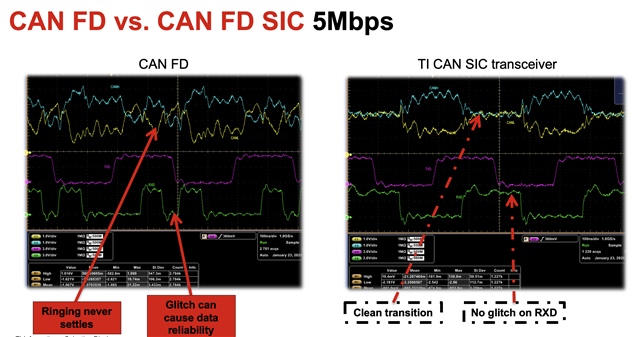Tool/software:
Hi team,
I have a question regarding the section “How CAN SIC Reduces Bus Ringing” in the following document.
https://www.ti.com/lit/wp/slla581a/slla581a.pdf
My understanding is that if the timing of the reflected wave becomes extremely long, it may not be fully mitigated. Is this correct?
Additionally, if there are any examples or waveform examples showing significant improvement achieved by installing SIC in complex CAN wiring configurations, I would appreciate it if you could share them.
Best Regards,
Ryu.



